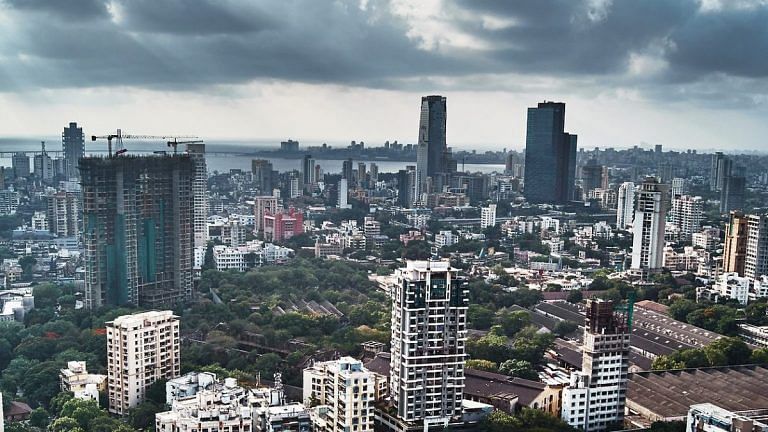- Mumbai has pledged to be net-zero by 2050.
- India’s largest city and de facto financial centre could lead the way in India’s low-carbon economic transition through inspired and innovative action.
- Collaboration among stakeholders will be key to reach this ambitious target.
Cities account for over 70% of global carbon emissions. Limiting global warming to 1.5°C will require rapid and far-reaching transitions in urban areas. It is heartening to see the recent announcement by Mumbai to become net-zero by 2050 – the first Asian city to commit to such an ambitious target on climate action.
Given the importance of such climate initiatives in sprawling metros, Mumbai has the unique potential to embark on a larger, bolder mission to steer the entire nation toward an inclusive, resilient, and net-zero future.
Mumbai the financial centre
Mumbai is home to large corporations, banks, and financial institutions. It is also the nerve centre of financial regulations in the country. This ecosystem has enormous potential to shape India’s future. The flag bearers at the helm of these institutions can influence India’s climate actions.
Collective action by key stakeholders can make a meaningful change to decarbonize the economy. There is a need for consensus to establish partnerships for climate actions, and the city can facilitate the creation of such a tightly knit, cohesive, sector-specific peer group. This coordination of different stakeholders can enable dialogue, build consensus, promote shared knowledge, expand expertise, consolidate existing initiatives, and document and transfer best practices.
It is imperative for the city to play an important role in bringing the stakeholders together. The city can form a leadership group with members from financial and non-financial companies. For example, all the banks and financial institutions with headquarters in the city can form a coalition to facilitate financing for net-zero targets.
As divestment in carbon-emitting businesses continues, engagement with corporates is the best strategy to decarbonize the economy. As a group, they can engage with their borrowers to facilitate the transition towards net-zero. They can set and follow uniform net-zero lending and investing standards to motivate borrowers to make business decisions to achieve net-zero. They can collectively move through proxy votes and proposals concerning climate change, thereby influencing the corporate business practices.
The leadership group can coordinate with policymakers and regulators based in Mumbai to build the right policy and regulatory mechanism to reduce carbon intensity over time.
The example of Paris
Mumbai should emulate Paris in providing climate leadership for the region. Paris seized the opportunity to host one of the most seminal climate-action episodes in humanity’s history, namely COP21. Paris’ emergence as a location of choice was thanks to it being the capital of a country that has, to a large extent, decarbonized its electricity. About 90% of France’s electricity supply comes from clean energy sources like nuclear, hydrogen, wind, and solar. Mumbai, in turn, can summon diverse stakeholders for decisive climate action.
The Brihanmumbai Municipal Corporation (BMC), armed with its Mumbai Climate Action Plan 2022, is best positioned to initiate such a move. It can provide a collaborative platform to facilitate action-oriented dialogue among corporates, financial actors, and financial regulators. BMC can bring civil societies, research institutions, and NGOs together to collaborate.
A Climate-Action-Council (CAC) can be formed through this collaborative platform, which will take the climate actions of the coalitions forward. BMC can ensure the success of its unique endeavour by becoming an active contributor to the CAC’s resource pool. It can provide smart incentives to corporates based in Mumbai and provide partial relaxation/rebate/reduction of property tax to organizations that pledge and deliver on the milestones towards achieving net-zero.
BMC’s critical role in Mumbai’s electricity distribution and public mobility sectors (through Brihanmumbai Electric Supply and Transport Undertaking) provides it with unique and powerful levers to offer tangible financial incentives to boost faster adoption of climate-smart actions by corporates and their employees. Moreover, it can offer at concessional rates outdoor advertisement avenues on BEST vehicles, bus stops, street furniture, and digital billboards to showcase climate actions. Such initiatives can entice more stakeholders to join the net-zero march.
Mumbai can infuse a fresh burst of ingenuity in India’s climate actions. It can change climate interactions from being confrontation to collaborative. Mumbai’s efforts could prove that local and regional initiatives can have a sizable impact on the fight against climate change. If Mumbai pulls this off, India’s own march to net-zero will be all the more possible.
The article previously appeared in the World Economic Forum.
